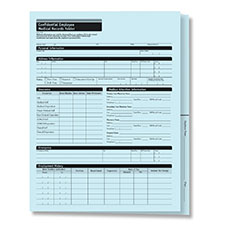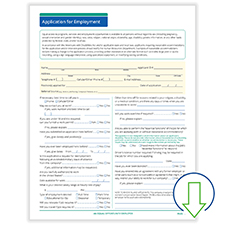
Firing employees is never an easy or comfortable undertaking for managers. It requires careful thought and actions to avoid complications and the risk of lawsuits.
Among the difficult firing scenarios, some pose greater challenges than others. Let’s consider six possible situations and how you can navigate them to stay within the limits of the law (while also minimizing discomfort for everyone involved):
- Firing a remote worker
The biggest issue here is how to handle the actual firing conversation, since the person isn’t onsite. If possible, arrange a video chat vs. delivering the news via phone or, worst, email. (Obviously, this will be less “suspicious” if you already interact with the worker through video calls). This way, the person can see your face and read your body language, which can go a long way toward conveying sensitivity.
Also, a best practice is to have someone else in the business (IT, for example) remove the worker’s login and company credentials during the firing conversation. This coordination ensures access to company networks and databases is shut off by the time the discussion is complete.
- Firing a tenured employee
Parting ways with a long-time employee is a particularly sensitive situation. From the perspective of the employee, they’ll most likely feel a sense of betrayal — that their years with the company could be so easily dismissed. But the reality is this: Business is business — and if an employee, whether one year in or 10, isn’t working out, the decision to fire may be necessary.
As it is, the employee’s longevity with the company may cause them to resist change or overestimate their worth, all of which can contribute to a less-than-ideal working relationship. As with any firing scenario, approach the final conversation with respect and thoughtfulness. And if it’s warranted, stress the fact that you’ll be happy to give a good reference and support the employee in their job search.
- Firing an employee about to retire
Ideally, a long-time employee will be a strong contributor up until retirement. But again, when performance is poor and the impact on the business is obvious, it’s within your rights to terminate, no matter how close to retirement they are.
You do need to be aware of two federal laws that could come into play in this scenario. The Age Discrimination in Employment Act (ADEA) prohibits you from terminating an employee based on age (protecting anyone age 40 or older). And the Employee Retirement Income Security Act (ERISA) bans you from discharging an employee simply to avoid paying retirement benefits. Be certain the reason for firing is legitimate and performance-based – and doesn’t trigger either of these laws. Then handle the conversation with the same tact as any other firing scenario.
Proper documentation is essential with any firing scenario. With the right progressive discipline tools and action, you can handle the toughest situations fairly and legally.
- Firing an employee due to the government ordering the temporary closing of business
If your business is ever forced to close because of a government order or other national emergency, you may feel like you have no choice but to terminate employees. A smarter move, however, is to temporarily lay off employees and provide resources to help them collect unemployment insurance (UI). This information is driven by state and local laws, so it will vary depending on where you operate. Extending healthcare coverage — a vital benefit for most employees — will also depend on state and local legislation and the terms of your employer healthcare plan. Another factor to consider is the federal Worker Adjustment Retraining and Notification (WARN) Act and similar state laws that impose specific time limits and notice requirements for employers with 100 or more full-time employees. A covered employer is typically required to give 60 days’ written notice of a “plant closing” or “mass layoff”, but this may not be necessary if employees are laid off for less than six months in response to a national emergency.
- Firing an employee for a social media post implying unsafe working conditions
Be careful how you proceed here. Disciplining employees for social media activity, particularly in cases where employees discuss the working environment or wages, could violate the National Labor Relations Act (NLRA). Even if an employee’s post sounds disloyal or critical of your company, the comments may be considered “protected concerted activity,” whether the employee is part of a union or not. For example, you could be committing an unfair labor practice if you fire an employee for an angry post about working overtime during the holidays.
On the other hand, employees aren’t entitled to say and share anything they want on Facebook, Twitter, LinkedIn and other social media platforms. It would be within your legal right to terminate (or at least, discipline) an employee for racist or offensive posts, as well as posts with confidential, proprietary information.
- Firing a family member
This scenario can be emotionally charged because of the family dynamic, but, again, business is business. If the issue has been addressed — whether it’s a lack of skills, poor performance, a bad attitude or something else — and the individual hasn’t stepped up, the decision to fire is warranted.
Depending on the type of family bond, you can certainly come from a place of caring and concern, but still be clear that the working relationship is ending. In the future, if you continue to hire family members, strive to always separate business matters from family conversations and gatherings.
Build a Strong Foundation for Fair, Legal Firings
Although you may encounter different scenarios such as these, it’s important to understand that specific disciplinary measures lay the groundwork for fair and legal firings. Progressive discipline puts the employee on notice of the severity of the problem, as well as the consequences for not correcting it.
Employee discipline and warning forms in the Fill-and-Save™ Performance Management Form Library help you address issues promptly and appropriately, in addition to providing the necessary documentation if termination becomes your only option. All fillable PDF forms are attorney-approved and guaranteed to comply with federal and state employment laws.
Related Content:
Be Careful How You Respond: Wrongful Termination Due to Retaliation





 Shopping cart
Shopping cart





